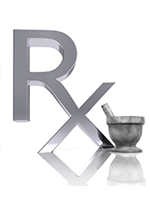At the recent 2010 Digestive Disease Week (DDW) meeting, positive data were presented for several investigational drugs close to approval for gastrointestinal (GI) disorders, including hepatitis C virus (HCV), Crohn’s disease, irritable bowel syndrome (IBS), and constipation.
Telaprevir, an investigational protease inhibitor, significantly improved response when added to standard treatment with pegylated interferon plus ribavirin in patients with difficult-to-treat HCV infection. In an open-label extension study of the PROVE 3 trial, most patients who had an initial response to standard treatment but then had breakthrough viral activity achieved sustained virologic response (SVR) to an additional course of treatment with telaprevir plus standard treatment.
In a post-hoc analysis of 342 difficult-to-cure patients, telepravir significantly improved both SVR and rapid virologic response compared with placebo. The superiority of telaprevir-based regimens was evident across all subgroups. Treatment with telaprevir, baseline viral load, minimal fibrosis, and prior response were all significant predictors of SVR.
Telaprevir and the second protease inhibitor, boceprevir, are expected to be approved in 2011, which may revolutionize the approach to the treatment of HCV infection.
CCX282-B (Traficet-EN), a novel selective and specific oral chemokine receptor 9 antagonist that prevents inflammatory cells from getting to the site of inflammation in the digestive tract, is in late-stage development.
CCX282-B maintained remission of Crohn’s disease over a 36-week period in the randomized, placebocontrolled PROTECT-1 study. In a 12-week induction phase of that study, this agent reduced the severity of Crohn’s disease.
No serious infections were documented in PROTECT-1, and the type and percentage of serious adverse events were comparable between the treatment arms.
Tumor necrosis factor-alfa regimens currently used to treat Crohn’s disease require infusions of antibiologic agents every 8 weeks or subcutaneous injections. Receiving an oral medication has the potential to improve adherence and enhance patient remission.
Rifaximin is a broad-spectrum antibiotic that is not absorbed in the bloodstream and, therefore, theoretically has an impact on gut flora thought to be involved in IBS. Rifaximin is currently approved for traveler’s diarrhea associated with Escherichia coli infection and for hepatic encephalopathy risk reduction.
The drug achieved positive results in patients with nonconstipated IBS in a pooled analysis of 2 pivotal, identically designed phase 3 studies, TARGET 1 and TARGET 2. A total of 1260 nonconstipated patients with IBS were randomized to receive rifaximin 550 mg 3 times daily or placebo for 14 days and were then followed for an additional 10 weeks. After 2 weeks of treatment, rifaximin achieved adequate relief of IBS symptoms in a significantly greater proportion of patients during the first 4 weeks (weeks 3-6) following 2 weeks (weeks 1 and 2) of treatment, and over the full 12 weeks of the study compared with placebo. Rifaximin also improved adequate relief of bloating during the first 4 weeks after the 2-week treatment period.
“These data clearly demonstrate rifaximin’s ability to provide durable relief of IBS symptoms and bloating and represent a major milestone in our efforts to bring new and meaningful hope to patients with IBS…. rifaximin may be an important new therapeutic option for these patients,” said Mark Pimentel, MD, Cedars-Sinai Medical Center, Los Angeles, CA.
Linaclotide is an oral guanylate cyclase-C receptor agonist that activates the chloride channel and boosts intestinal fluid secretion. In 2 phase 3 clinical trials, the drug significantly increased the number and quality of spontaneous bowel movements in patients who relied on laxatives before the study. No unexpected safety issues emerged in these trials.
The 2 nearly identical 12-week trials, with a total of 1272 patients, randomized patients to the drug or to placebo. Response (defined as having at least 3 complete spontaneous bowel movements per week as well as an increase of 1 weekly movement per week from baseline) was seen in 21.3% and 19.4% of patients treated with high-dose linaclotide compared with 6% and 3.3%, respectively, for the placebo groups. The lower dose of linaclotide was almost as effective as the higher dose. Linaclotide also improved stool consistency, severity of straining, overall constipation severity, and patient-assessed quality of life.
The only downside was diarrhea, which occurred in about 15% of patients; 4% discontinued treatment because of this.


